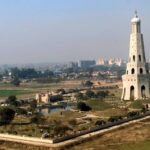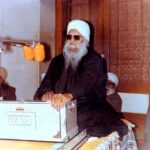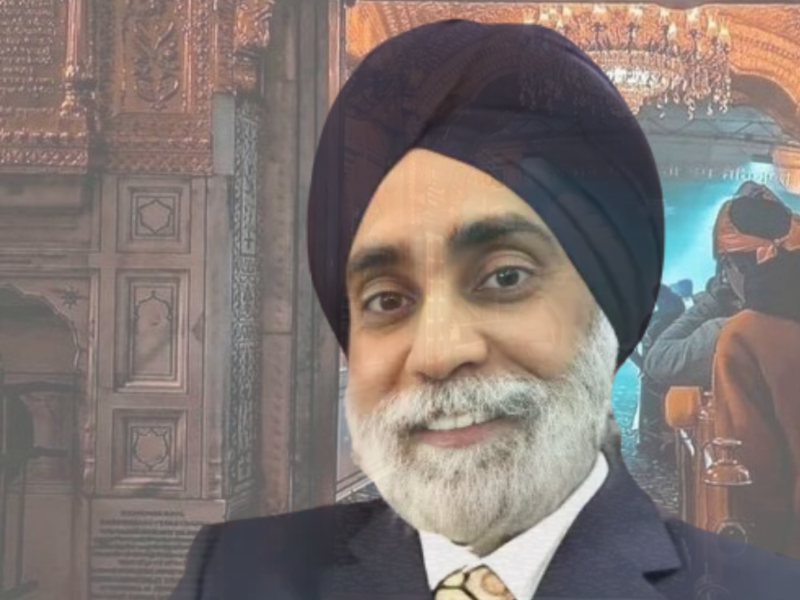Banda Singh Bahadur (born Lachman Dev; October 1670 – 9 June 1716), was a Sikh warrior and commander of the Khalsa army. At the age of 15, she left home to pursue a life of self-sacrifice, and she was nicknamed Madho Das Bairagi. He built a monastery in Nānded, on the banks of the river Godāvarī. In 1707, Guru Gobind Singh accepted an invitation to meet Bahadur Shah I in southern India. He visited Banda Singh Bahadur in 1708. Banda became a disciple of Guru Gobind Singh and was given a new name, Banda Singh Bahadur, after the Baptismal Ceremony. He gave Guru five arrows as a blessing for the coming battles. He came to the Head in Sonipat and organized an army and led the struggle against the Mughal Empire.
His first major act was the expulsion of the Mughal provincial capital, Samana, in November 1709. After establishing his authority and rule of Khalsa in Punjab, Banda Singh Bahadur abolished the mandarin system, and granted land rights to landowners. Banda Singh was kidnapped by the Mughals and tortured to death in 1715-1716.
Early life
Monument to Shaheed Baba Banda Singh Bahadur at Chhapar Chiri, near Mohali.
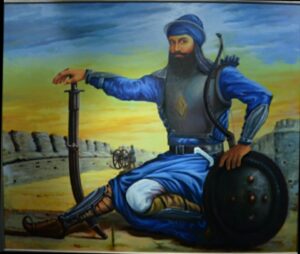
Banda Singh Bahadur was born into the Dogra Rajput family in Bhardwaj and found a farmer in Ram Dev, Rajouri (now Jammu and Kashmir). Ahwāl-i-Lachhmaṇ Dās urf Bandā Sāhib of Hakim Rai (“Ballad of Banda Bahadur”) states that his family belonged to the Sodi class of Khatri. However, the claim seems to have been an attempt to assassinate him as a follower of Guru Gobind, since the previous Sikh Gurus were Sodis.
Early victory
Areas related to the life of Baba Banda Singh Bahadur
After meeting Guru Gobind Singh, he headed for the Head and fought the Mughals with the help of the Sikh army at the Battle of Sonipat.
In 1709, he defeated the Mughals in the Samana War and captured the Mughal city of Samana (30 km southwest of Patiala) Samana coins. With this wealth, Sikhs are financially stable. Sikhs soon occupied Mustafabad (now Saraswati Nagar)and Sadaura (both of which are located in the present-day Yamunanagar region, northeast of Haryana). The Sikhs then captured the Cis-Sutlej areas of Punjab, including Malerkotla and Nahan.
On May 12, 1710, at the Battle of Chappar Chiri, the Sikhs assassinated Wazir Khan, the Governor of Sirhind and Dewan Suchanand, who were responsible for the martyrdom of two of Guru Gobind Singh’s two young sons. Two days later, the Sikhs captured Sirhind. Banda Singh now occupied the area from Sutlej to the Yamuna. He ordered land ownership to be given to farmers and to live with dignity and self-respect.
Military Attack
Banda Singh Bahadur developed the village of Mukhlisgarh and made it his capital. He then renamed it Lohgarh (castle of iron) from which he extracted his mint. The coin described Lohgarh: “Struck in the City of Peace, which symbolizes the beauty of public life, and the decoration of the blessed throne”.
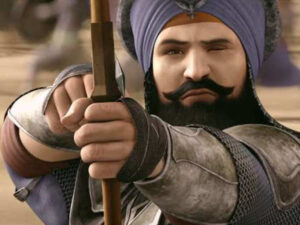
He founded the region in Punjab briefly for half a year. Banda Singh sent Sikhs to Uttar Pradesh and Sikhs captured Saharanpur, Jalalabad, Muzaffarnagar, and other nearby places.
Transformation
Banda Singh Bahadur is known for establishing the Zamindari and Taluqdari system during his tenure and giving farmers ownership of their land. It appears that all sections of the government were slaves to fraud and corruption and that the entire system of governance and order was abolished.
Local culture recalls that people from Sadaura’s neighbors came to Banda Singh to complain about the evils of the landlords’ practices. Banda Singh ordered Baj Singh to open fire on them. People were amazed at the strange response to their representation and asked him what he meant. He told them that they did not deserve to be treated better as they were thousands in number and still allowed themselves to be defeated by a handful of Zamindars. He defeated the Sayids and Shaikhs in the Battle of Sadadhaura.
Mughal persecution
Sikh rule over the entire Punjab in eastern Lahore disrupted communications between Delhi and Lahore, the capital of Punjab, and this worried Mughal Governor Bahadur Shah He abandoned his plan to defeat the Rajasthan rebels and marched towards Punjab.
The entire royal army was organized to defeat and kill Banda Singh Bahadur. All generals were instructed to join Lion’s army. To ensure that there were no Sikh ambassadors in the military camps, an order was issued on August 29 1710 for all Hindus to shave their beards.
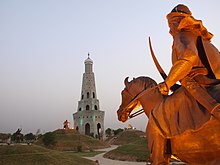
Banda Singh was in Uttar Pradesh when the Moghal army under the command of Munim Khan marched on Sirhind and before Banda Singh’s return, they had already captured Sirhind and the surrounding areas. So the Sikhs moved to Lohgarh with their final battle. The Sikhs defeated the army but reinforcements were called and they besieged the fort with 60,000 troops. Gulab Singh put on Banda Singh’s clothes and sat down in his place.
Banda Singh left the fort at night and went to a secret place in the hills and forests of Chamba. The army’s failure to kill or capture Banda Singh shocked the Emperor, Bahadur Shah and on December 10, 1710, he ordered that wherever the Sikh was found, he should be executed.
Banda Singh Bahadur wrote to the Sikhs Hukamnamas to reorganize and join him at the same time. In 1712, the Sikhs gathered near Kiratpur Sahib and defeated Raja Ajmer Chand, who was responsible for organizing the entire Hill Rajas against Guru Gobind Singh and waging war with him. After the death of Bhim Chand, another Hill Rajas accepted his position and paid for Banda Singh.
While Bahadur Shah’s four sons committed suicide for the sake of the Mughal Emperor’s throne, Banda Singh Bahadur also captured Saddaura and Lohgarh. Farrukh Siyar, the next Mughal emperor, appointed Abdus Samad Khan as governor of Lahore and Zakaria Khan, son of Abdus Samad Khan, Faujdar of Jammu.
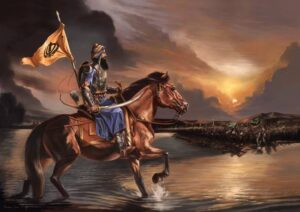
In 1713 Sikhs traveled from Lohgarh and Sadadhaura to the remote hills of Jammu where they built the Dera Baba Banda Singh. During this time the Sikhs have mainly persecuted Mughal in the Gurdaspur region. Banda Singh came out and captured Kalanaur and Batala (both places in the modern Gurdaspur region who warned Farrukh Siyar to send Mughal officials and Hindu chiefs to continue their troops to Lahore to strengthen his army.
The siege in Gurdas Nangal
In March 1715, troops under the rule of Abd al-Samad Khan, the Mughal ruler of Lahore, captured Banda Bahadur and Sikh forces in the town of Gurdas Nangal, 6 km west of Gurdaspur, Punjab, and besieged the city. The Sikhs defended a small fortress for eight months under extreme pressure, but on December 7, 1715, the Mughals broke into a starving camp and kidnapped Banda Singh and his companions.
Execution
Shaheed Baba Banda Singh Bahadur is executed in Delhi, a statue erected in the Mehdiana Sahib, near Jagraon in the state of Ludhiana, India.
Banda Singh Bahadur was placed in a metal cage and the remaining Sikhs were chained. Sikhs were brought to Delhi in procession with 780 Sikh prisoners, 2,000 Sikh heads were hung on handcuffs, and 700 Sikh war chariots were used to intimidate the public. They were imprisoned in Delhi and forced to renounce their faith and become Muslims.
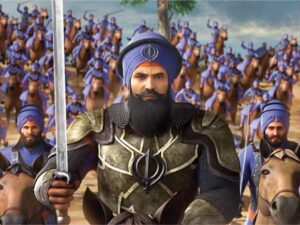
The prisoners remained motionless. For their firm refusal, these unconverted ones were ordered to be executed. Every day 100 Sikh soldiers were taken out of the fort and killed in public. This went on for about seven days. He was told to kill his four-year-old son, Ajai Singh, who refused to do so. Therefore, Ajai Singh was killed, his heart was cut, and put in the mouth of Banda Bahadur. However, his decision did not break through torture, so he was martyred. Three months after his imprisonment, on June 9, 1716, Banda Singh’s eyes were gouged out, his limbs amputated, his skin removed, and he was executed.

